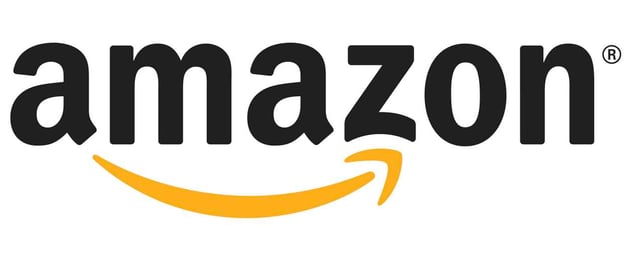What is Dynamic Pricing?
According to Forrester, an independent technology and market research company, dynamic pricing is “an innovative pricing mechanism made possible by recent advances in information technology… that allows online companies to adjust the prices of identical goods.”
Dynamic pricing, also called real-time pricing, is an approach to setting the cost for a product or service that is highly flexible. The goal of dynamic pricing is to allow a company that sells goods or services over the Internet to adjust prices immediately in response to market demands.
Dynamic pricing is revolutionary – and legal. The general public has learned to accept dynamic pricing when purchasing, for example, airline tickets or reserving hotel rooms online. The approach, which is sometimes marketed as a personalization service, has been less successful with online retailers. It has led to an increase in competition online – and frequent price cuts - which benefits online shoppers rather than vendors.
Dynamic pricing offers several advantages - by pricing products based on market demand, companies have the potential to enjoy greater profitability on each item. Just because prices can move down with dynamic pricing doesn't necessarily mean profits also decline. Andale, an auction management company, surveyed eBay's online sellers. The average margin was 40 percent. Sellers benefit from a bigger pool of potential buyers, and buyers benefit from increased choices.
The price changes involved are controlled by pricing software. The software takes into account the level of demand, your competitors' prices, customer location, time of day and day of the week. By collecting and analysing data about a particular customer, a vendor can more accurately predict what price the customer is willing to pay and adjust prices accordingly.
Have you ever checked on the price of a hotel room twice in the same week and seen that the price had increased the second time? That's dynamic pricing in action!
If retailers have the data to engage in the strategy but can't afford to compete with low prices, they find innovative ways to improve the customer experience with tactics such as live chat.
Amazon, with its data-driven approach, is still reigning supreme with its dynamic pricing techniques. They have aggressively pursued their loss-leader strategy – by intelligently lowering their prices in order to compete against other retailers, they have captured a huge market share. The sacrifice was their margins – but they can afford to do this.

If you're a retailer considering dynamic pricing, how do you find the middle ground? You don't want to frustrate customers, as travel companies often do, but at the same time you don't want to undercut all of your competitors and harm your bottom line.
9 ways to implement a successful dynamic pricing strategy
1. Use Accurate Competitive Data
A well-balanced dynamic pricing strategy starts with data on your competitors. This pricing data helps you establish the range of prices you can use to stay competitive. Unfortunately, competitor data is not always perfect:
-
Missing or incorrect pricing data can be frustrating for retailers. Sometimes universal product code numbers get mixed up and your pricing data actually relates to the wrong item.
-
Do you have a well-defined policy for analyzing data? If you want to successfully carry out a dynamic pricing strategy, you need a savvy business analyst to keep your data clean and to identify illogical errors.
-
Combining expertise between business and technical stakeholders will help you create a robust data cleansing service. Collect as much raw data as possible, set up data cleansing, and then feed the "pure" data to their algorithms for optimization.
2. Test Your Prices Constantly
-
Once you have accurate data, you can start working on what is the best price for your products. However, what works well for one retailer may not work at all for another. Remember that behind every purchase decision, there are several factors that help determine the optimal price, such as brand value, shipping costs, competitor prices, price elasticity, etc.
-
So how do you find the right price? Analyzing how different prices affect your bottom line, sales revenue, and conversion rates can help you find the optimal price for you and your customers. The lowest price doesn't always win the sale!
-
Price testing helps you find the price that is most appropriate for your brand and your customers. Using this type of data-driven strategy can help you make informed decisions about your pricing.
3. Do not be Discriminatory
-
There have been reports of certain retailers using demographics to determine prices throughout the day. For example, if a shopper visits their website using an Apple laptop, the prices would be higher than someone using a PC. They have also increased the price for customers farther away from their walk-in stores. While it is an opportunity, it's price discrimination – and wrong.
-
Fluctuating prices between two customers is not only wrong, it can also be illegal. Instead of using individual customer traits and demographics to price your products, let the market and your internal business strategy dictate and justify prices. It's basic economics. The market will determine the price, and it's up to you to match that price or alter it to make a sale.
-
In the space of two weeks last year, online retailer Amazon.com was forced to apologize, issue refunds and appease angry customers after it was found to have charged some people more than others in random price testing on its Website. Amazon.com faced allegations - which it denied - that the different prices were based on customer data, such as where a person lives and how much he or she might have previously bought at Amazon.com. “We’ve never tested and we never will test prices based on customer demographics,” founder Jeff Bezos said in a news release.
4. Work toward integration
Knowing the optimal price based on historical sales data is only a first step. Long term, companies must integrate price optimization systems with purchasing and other supply-chain systems. Systems also should be integrated with CRM and promotional systems.
5. Invest in technology
Dynamic pricing requires robust systems and sophisticated software that can handle large volumes of transactions and other data. Technology is also critical to ensure that offline, online and telephone-based prices stay the same.
6. Work on segmentation strategies
Systems will enable time-of-day pricing, enhanced loyalty programs and other capabilities that improve payoffs from segmentation. Using pricing and CRM software together, the gambling industry has raised segmentation to a fine art.
7. Expect a squeeze on manufacturers
Wal-Mart helped start the ball rolling by wresting pricing control away from manufacturers. Pricing systems will give retailers even greater power in negotiations by letting them tell manufacturers precisely what a product will sell for, and when.
8. Keep humans involved
Intuition still has value. Moreover, automated systems cannot account for variables like the weather or world events like war or terrorist activity.
9. Use 'Clean' Data
You need 'clean' data in order to make your prices effectively dynamic. You need to select the data sets you use in a way that does not alienate your customers and you need to process this data in a way that makes it useful to you.
Why now?
An increasing number of retailers are taking a leaf out of Amazon's book and are beginning to implement the same dynamic pricing strategies. Dynamic pricing gives retailers of all sizes the opportunity to compete against a company as large and resourceful as Amazon.
Initially it may be a lot of work, but when it's implemented correctly, dynamic pricing can appease your customers by offering optimized prices in accordance with your brand without attacking your margins. With the help of data cleaning and price testing, retailers can grow to be as competitive as Amazon while turning impressive margins.
Another advantage of dynamic pricing is real-time information about market forces. This information can let companies immediately see the effect of sales and marketing activities and fine-tune their production. It also provides warning signals concerning falling demand, reducing the likelihood of unsold stock.
Dynamic pricing enables retailers to capture the most revenue from their products. Retail Prophet put it this way: “It enables a retailer to optimize their pricing based on real time inputs, as opposed to setting a price over the long term and either pricing too low and giving up margin needlessly or charging too much and losing sales.” It also ensures that the customers who value a product the most have the opportunity to purchase it.
Dynamic pricing is spreading fast. Research organization IDC forecasts that 20 percent of BTB e-commerce transactions will involve some type of dynamic pricing within a few years.
Related Posts
- 6 Core Elements of Dynamic Pricing
- 5 Ways Price Management is Changing
- 10 fears that stop you for optimising your prices
Sources
- http://www.dmnews.com/digital-marketing/advantages-of-dynamic-pricing/article/80877/
- Dynamic Asset Pricing Theory 2005 by Darrell Duffie (Author).
- Empirical Dynamic Asset Pricing: Model Specification and Econometric Assessment. 2006 by Kenneth J. Singleton.
- Asset Pricing for Dynamic Economies 2008 by Sumru Altug.
- http://whatis.techtarget.com/definition/dynamic-pricing
- http://blog.hubspot.com/marketing/dynamic-pricing-without-sacrificing-margins-customers
- http://abcnews.go.com/Technology/story?id=119399&page=1


